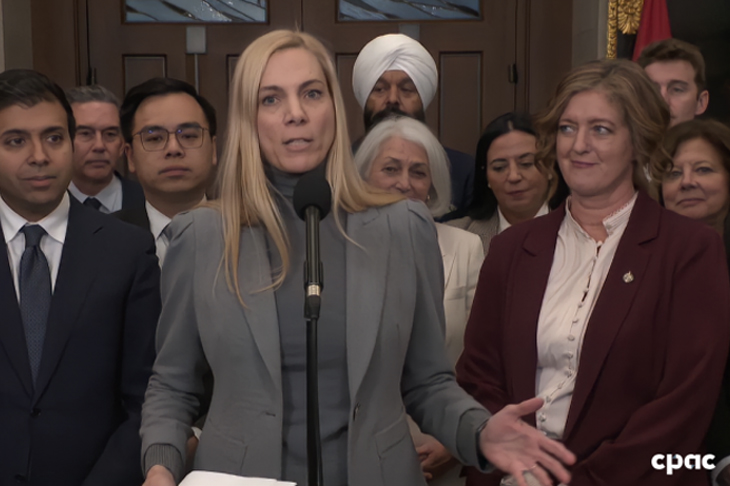By Ahmad Hathout
The CRTC said Thursday it is considering reducing the financial obligations on traditional commercial radio broadcasters while maintaining content requirements to level the playing field with online streamers.
“The Commission acknowledges that some view content requirements as a heavy regulatory imposition. At the same time, the Commission recognizes that content requirements do not appear to work in an online context. As such, to help level the playing field and respond to the changing landscape, the Commission is of the preliminary view that traditional audio undertakings should be relieved of some of the other regulatory burdens they are subject to,” the CRTC said as part of its consultation on the definition and discoverability of Canadian audio content.
The regulator is now asking the public to comment by April 7 about whether reducing burdens, including administrative and financial, would represent “an equitable and sustainable approach to contributions,” as well as whether the content requirements on these stations should be maintained and, if so, how could broadcasters “enhance the presence of musical content from equity-deserving and ethnocultural communities.”
The consultation is also reviewing the annual financial contributions made by those traditional radio broadcasters. Currently, commercial radio stations are subject to content development contributions of $1,000 plus 0.5 per cent of revenues over $1.25 million annually, whereas satellite and pay audio are subject to an annual contribution of four per cent of gross revenues.
The CRTC said it is of the preliminary view that traditional radio broadcasters would be required to make annual financial CanCon contributions if they make $25 million or more in yearly Canadian revenues and are part of a larger broadcasting group. This view would align with the requirement on foreign and standalone Canadian streamers who must contribute five per cent of their previous year’s revenues to certain funds if they meet that revenue threshold. The base contribution is now on hold as it goes through the Federal Court of Appeal.
The commission is asking whether the financial contribution levels should be the same or different for various types of undertakings; whether online and traditional broadcasters should be forced to allocate the amounts in the same way; and if certain funds should be the focus of the contributions.
The CRTC has for many months fielded applications from large traditional broadcasters about the need to reduce their regulatory obligations as they say the media industry has faced pressure from both advertising revenue declines and competition from foreign streamers. The commission, minus the Corus exception, has put off those applications to focus on the implementation of the new Broadcasting Act.
The commission is also asking what types of financial contributions or initiatives from online audio services can have a “measurable impact” on the discoverability of Canadian, French-language and indigenous musical selection; how those services can specifically enhance exposure of those musical selections and what tools or measures could assist; whether such discoverability initiatives be counted toward their regulation “contribution;” whether some of those initiatives should be prioritized; whether those online services should publicly report those measures; and whether there are dynamics that prevent Canadian music from being discovered on online services.
Broadly, Thursday’s consultation on what makes audio “Canadian” is part of the regulator’s implementation of the Online Streaming Act, which brings online streamers under the CRTC’s ambit. In furtherance of Canadian content, the law requires the CRTC consider, among other things, Canadian ownership of that content; the key positions Canadians hold in the management of that content, including when there are collaborations; and whether a program furthers Canadian artistic and cultural expression.
The commission is specifically seeking comments on definitions for “Canadian musical selection,” “emerging artist,” and “French-language vocal music,” with another primary focus on indigenous content.
The CRTC said Thursday it is of the preliminary view that the criteria for “Canadian musical selection” should change.
Currently, a musical selection is defined as any live or recorded music of one minute or more broadcast uninterrupted and includes a medley or a montage. For the piece to be considered “Canadian,” it must meet, with some exceptions, at least two of four criteria under the MAPL (music, artist, performance, lyrics) system: the piece is composed entirely by a Canadian; the music is, or the lyrics are, performed principally by a Canadian; the musical selection consists of a live performance that is recorded wholly in Canada or wholly in Canada and broadcast live in Canada; and the lyrics are written entirely by a Canadian.
After consultation with the industry and online streamers in September 2024, the CRTC said it of the view that the performance criterion should be eliminated because “it is very difficult to verify or identify where the live performance that comprises the musical selection took place.”
Now, it’s proposing that “Canadian” music meet two of three criteria from a new “MAL” system: the music is composed principally (at least 50 per cent) by a Canadian; the music is, or the lyrics are, performed principally (at least 50 per cent) by a Canadian; and the lyrics are written principally (at least 50 per cent) by a Canadian.
Those that currently qualify as “Canadian” will continue to be considered as such even after the new system is imposed, it said.
The CRTC said it is still open to fielding suggestions for replacing and not outright removing the “P” criterion in MAPL.
In 2022, the regulator set out an expectation that commercial radio stations dedicate, in each broadcast week, at least five per cent of all musical selections to those from Canadian emerging artists – defined as those whose first commercially marketed song was available within the past 48 months and, if in a group, who share a defined identity.
The CRTC is now proposing to modify that expectation to tie the time-based criterion to when they get their standardized International Standard Recording Code (ISRC) code. The ISRC codes will be used in metadata as part of a CRTC database it said it is currently developing to support broadcaters’ compliance with CanCon requirements.
The regulator said it believes this makes the definition “inclusive, easily implementable, and easily traceable not just by commercial stations, but by campus, community, Indigenous stations, satellite radio, and online audio services.”
The regulator is also considering modifying the five per cent dedicated to emerging artists because it found “very few broadcasters devoted 5% or more of their musical selections to selections from Canadian emerging artists, while those who broadcast music by Indigenous artists did so to very low levels.”
Beside considering an emerging artist category as part of its database, the commission is asking the public how it can incent broadcasters to give emerging artists more airtime. It is also considering implementing a three per cent requirement to broadcast indigenous musical selections over the broadcast week by the third year following implementation, which would progressively increase to five per cent by the fifth year.
The CRTC is also considering implementing other measures that would work in a broadcaster’s favour when it comes to fulfilling their regulatory obligations, including recognizing on-air talent.
The consultation is also asking about funding support for news content, whether there should be more prescriptive obligations on audio news programming, how the commission could support news in indigenous and other languages, how online entities could support news programming, and whether there are more ways other than tangible benefits – funds dedicated to CanCon funds as a condition of approving broadcast acquisitions – to support the system.
The CRTC will hold a hearing on these matters on June 18.
Last month, the CRTC launched another consultation on the visibility of Canadian content on television and challenges faced by broadcasters in the market.
Cartt.ca - Contributor
-
Ahmad is an entrepreneurial, scoop-hungry, nose-to-the-grindstone former Parliamentary press gallery reporter with a passion for unearthing new information and breaking news.
Editor+Chief Reporter









